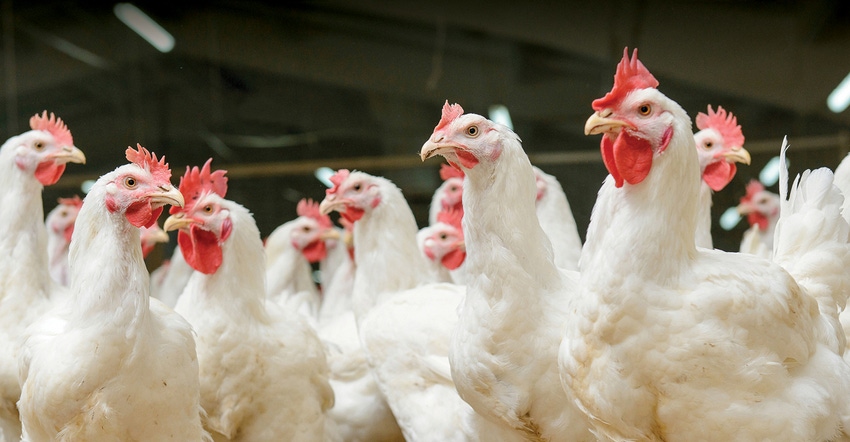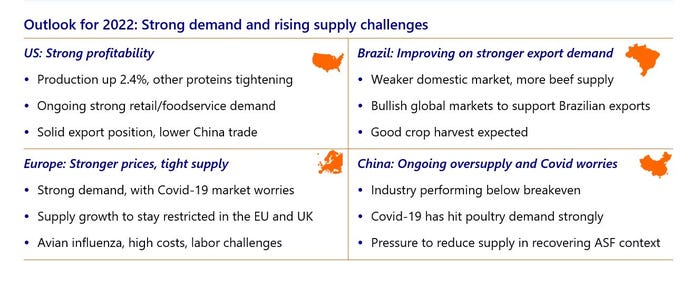Feed prices in particular are expected to stay high and volatile, with Rabobank expecting a 5% increase in feed commodity costs in the first half of 2022.
December 16, 2021

Global poultry markets are expected to be strong in 2022, on the back of reopening economies, increasing vaccination levels and stronger economic conditions. Rabobank’s latest poultry report sees growing demand, but cautions that managing supply will be a key challenge in the coming year. This will create an environment of stronger prices in many markets worldwide.
As general economic conditions improve around the world, demand for poultry follows, with global growth expected to reach 2% in 2022, despite the restrictions caused by supply challenges. In the second half of 2021, supply growth was restricted by high costs, avian influenza and other disease concerns, reduced capacity and limited availability of inputs. Rabobank expects supply to remain tight in 2022 due to high input prices, reduced labor availability in many countries and logistics challenges.
Input costs are expected to stay high in 2022, with elevated feed, labor, logistics, energy and construction costs. Feed prices in particular are expected to stay high and volatile, with Rabobank expecting a 5% increase in feed commodity costs in the first half of 2022. Prices for corn and soybeans are expected to peak in the third quarter.
"In 2022, it is highly unlikely that food prices will go back to their five-year averages, as commodity prices are now supported by inflation in the general economy, low global stock levels and labor shortages in many countries," says Nan-Dirk Mulder, Senior Analyst – Animal Protein at Rabobank. "These high input prices will push producers to focus on yields, procurement and efficiency in the value chain to reduce feed and labor use."
Global trade strong but volatile
Global demand will be strong but volatile given the supply-side restrictions. Rabobank expects the market to see ups and downs in line with COVID-19 developments and resulting government measures. The industry will need to be ready to adjust sales channels accordingly.
Global poultry traders will benefit from improved market conditions, but will also operate in a volatile market environment. Furthermore, from a product perspective, processed chicken markets will face the greatest challenges, due to the supply situation in Thailand, where a lack of labor has slowed production.
"A big challenge for producers in 2022 will be managing volatility in demand in a context of supply chain challenges," says Mulder. "There is some downward pressure on wet markets. Some cities, for example in China and some Southeast Asian countries, have permanently closed wet markets in urban areas. This will mean an ongoing shift from an informal to a more formal chain and more processed meat demand. At the same time, we see fast growth in online food distribution and home delivery in many markets."
Poultry prices on the rise
The combination of stronger demand and these supply challenges will create an environment of stronger chicken prices.
"The restricted supply and high input costs will, in our view, lead to relatively high global chicken prices until well into 2022 in most regions," says Mulder. "In response, producers will look to step up investments in new capacity, although these will be slow due to high investment costs and uncertain market conditions. Producers will, therefore, focus on optimizing existing facilities to increase productivity, but in general, it will keep supply relatively tight."

You May Also Like


.png?width=300&auto=webp&quality=80&disable=upscale)
